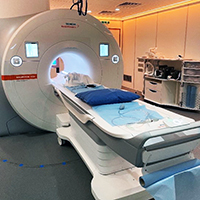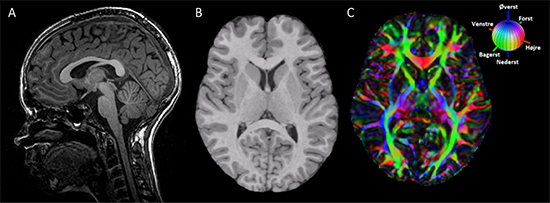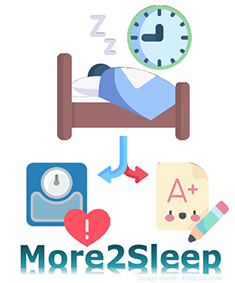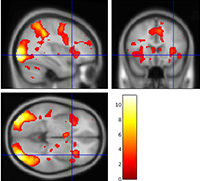More2Sleep
The Effect of Sleep Extension on Children’s Health and Learning
The primary aim of this study is to investigate the effects of extending sleep by 60–90 minutes per night on body weight regulation and learning ability in school-aged children (6–12 years) who sleep nine hours or less per night.
The secondary aim is to explore various physiological processes that may help explain the effects of prolonged sleep.
Research shows that there is a link between too little sleep and an increased risk of physical and mental health challenges in both children and adults. Children may experience negative effects on both their physical and mental well-being even in the long term.
Moreover, just a few hours of less sleep can affect concentration and memory, which may negatively impact the ability to learn and perform well in school.
The link between weight, insufficient sleep, and learning ability in children may be caused by insufficient sleep affecting cognitive processes such as attention, decision-making, and memory.
However, we still lack knowledge about the causes of these relations. In particular, we do not yet know how changes in sleep affect body weight regulation and learning in children.
In other words, while we know that too little sleep is linked to negative health effects in children, we do not yet know how extending their sleep might influence these areas. This is why the aim of the study is to investigate the effects of increased sleep in children.
The study focuses on sleep. Participants will be randomly assigned to either a sleep extension group or a control group. Regardless of group, all participants will take part in the same assessments, but only the sleep extension group will be asked to sleep longer for a period of three months after the initial measurements.
The study includes measurements and assessments before and after the active three-month period, as well as a follow-up visit nine months after the study begins. Families in the sleep extension group will have ongoing conversations with a family counselor, who will guide and support the family in improving the child’s sleep and extending their sleep duration. The control group will have the same number of sessions with the family counselor. The total study period for each child will be about 10 months, from the information meeting to the follow-up visit.
Some measurements will be collected for all participating children (“main study”), while additional measurements will be part of Substudy I and II, which participants can choose to join.
The main study takes place at the University of Copenhagen, Department of Nutrition, Exercise and Sports, Nørre Allé 51, 2200 Copenhagen N.
Substudy I takes place at Rolighedsvej 26, 1958 Frederiksberg C, and
Substudy II takes place at Hvidovre Hospital, Kettegård Allé 30, 2560 Hvidovre.
The study is a collaboration between researchers from the Department of Nutrition, Exercise and Sports at the University of Copenhagen, the Danish Center for Sleep Medicine (Rigshospitalet), and the MR Department at Hvidovre Hospital (DRCMR).
In addition, the study benefits from collaboration with national and international partners who have expertise in behavioral interventions for children, assessment of physical activity and energy expenditure, as well as brain activity and structure.
Overview of the measurements conducted as part of the study:
- Height, weight, and body composition
- Blood pressure, heart rate, and body temperature
- Blood samples (e.g., measuring glucose, puberty hormones, insulin, and appetite-related hormones)
- Physical activity using a wrist-worn activity tracker for one week
- Questionnaires for parents and children about demographics, sleep, diet, and well-being
- Measurement of sleep and sleep quality
- Cognitive functions, short- and long-term memory
- Brain and muscle activity
- Motor skills and academic abilities
Optional Substudy I:
- Resting metabolism and metabolism after a meal
- Total energy expenditure using the doubly labeled water (DLW) method
- Assessment of hunger using a picture-based scale
- Blood samples (maximum 2 in total; one before and one after meal intake)
Optional Substudy II:
- MRI brain scan to gather information on brain structure and activity
What is MRI?
MRI (magnetic resonance imaging) is a method used to take detailed pictures of the inside of the body. It is commonly used in hospitals and research.
How the Scanner Works
 MRI works because certain atoms in the body are magnetic and behave like tiny compass needles. When the body is placed in the scanner’s magnetic field, these atoms become slightly magnetized, aligning like compass needles.
MRI works because certain atoms in the body are magnetic and behave like tiny compass needles. When the body is placed in the scanner’s magnetic field, these atoms become slightly magnetized, aligning like compass needles.
During the scan, radio waves are sent into the body, causing the atoms to vibrate in the magnetic field. This is not felt by the person in the scanner. The vibrations are detected by the scanner and used to create images of the body’s interior, allowing us to see how different parts of the brain look and function.
MRI is safe and painless. No X-rays or anesthesia are used.
MRI Safety
Because MRI uses a strong magnetic field, certain safety precautions must be followed. You cannot have magnetic metal or implants in the body (e.g., metal fragments in the eyes, pacemaker, insulin pump, artificial heart valves, metal clips in the brain or heart) and cannot be pregnant.
About the Scan
The MRI scanner is a tube open at both ends. The child lies on a bed that slides into the scanner. Brain images are taken while the child lies in the scanner and watches a movie. The scanner makes loud noises during operation.
To protect hearing, we provide specialized earplugs and child-sized earmuffs, which can play the sound from the movie the child is watching. The scan takes about 50 minutes.
Parents can stay inside the MRI room close to the child during the scan.
MRI Simulator
It is important that the child remains completely still during the scan. To prepare, we use an MRI simulator. Here, the child can see, hear, and feel what a scanner is like and practice lying still.
Video in Danish.
Types of MRI Images in More2Sleep
Depending on the scanner settings, different types of images of the brain can be taken. In the More2Sleep study, we take three types of images: anatomical images, images of nerve pathways, and images of brain activity.
Anatomical Images
Anatomical images show contrasts between different types of brain tissue. These images help evaluate brain structures, including volume and thickness.

Nerve Pathways
Images of the brain’s nerve pathways focus on white matter to map connections between brain areas. These images are taken using diffusion-weighted sequences. For example, in one image, pathways running from the front to the back of the brain are shown in green, from top to bottom in blue, and from side to side in red.
Brain Activity
Think of the brain and its cells like working muscles. Each brain cell needs oxygen when it is active to maintain brain function. Functional MRI (fMRI) allows us to see brain activity based on where oxygen is used. Areas using more oxygen “light up” in the analysis and are interpreted as more active than other areas.
MR-skanning er en metode til at optage detaljerede billeder af kroppens indre. MR står for magnetisk resonans. Metoden bruges dagligt til en lang række billeddiagnostiske undersøgelser på hospitaler og i forskning.
More2Sleep was initiated by Professor Faidon Magkos, Department of Nutrition, Exercise and Sports, University of Copenhagen, and is funded by the Novo Nordisk Foundation.
The grant for the study is deposited into a separate research account and is subject to audit.
The funding covers salaries for study staff, materials, and expenses related to conducting the study.
The funder has no influence on how the study is conducted, the analyses, interpretation of results, or publications arising from the study.
The study results, whether positive, negative, or inconclusive, will be published in international scientific journals and presented at scientific conferences. When the results are published, it will not be possible to identify individual participants in any way.
On this website, the overall results of the study and related scientific articles will be shared once the study has been completed and the results have been analyzed. This process typically takes a few years.
Researchers
Internal
| Name | Title | Phone | |
|---|---|---|---|
| Cecilie Holm Rasmussen | PhD Fellow | +4535335827 | |
| Eva Leedo-Townend | Academic Research Officer | +4535333568 | |
| Faidon Magkos | Professor | +4535333671 | |
| Jesper Lundbye-Jensen | Associate Professor, Head of Section | +4535327330 | |
| Jonas Rud Bjørndal | Postdoc | +4535321587 | |
| Malene Skriver-Bayer | Project Officer | +4535331972 | |
| Maria Ida Rosenkrans | Research Assistant | ||
| Nadia Daly Neesgaard | PhD Fellow | +4535333537 |

Overall Responsible:
Professor Faidon Magkos and
Associate Professor Jesper Lundbye-Jensen
The study has been approved by the Danish Research Ethics Committee for the Capital Region (Project ID: H-23063352).
The study is registered on www.clinicaltrials.gov (NCT06341179), a database of human clinical studies.

